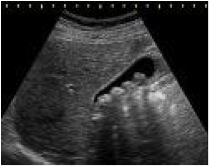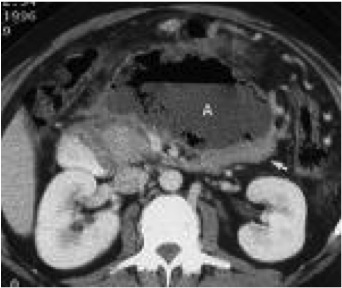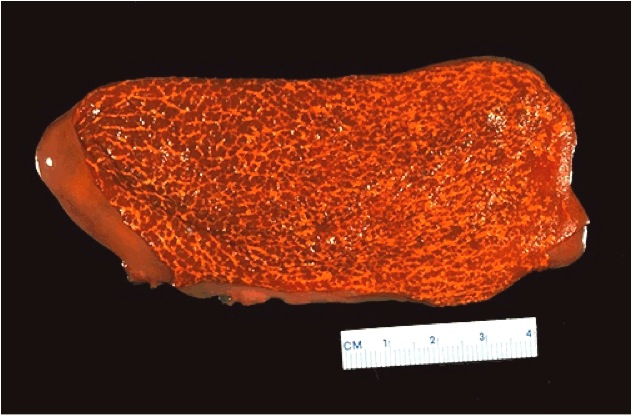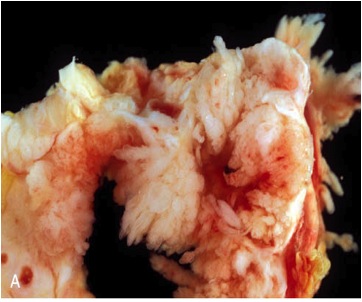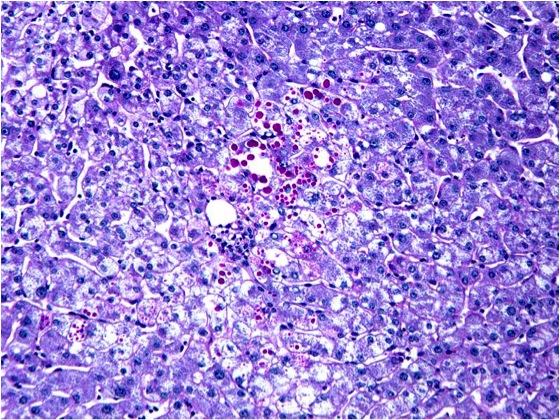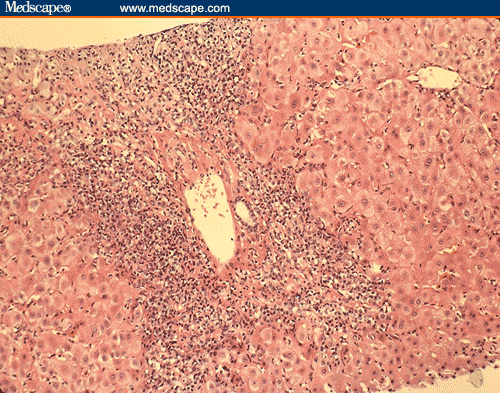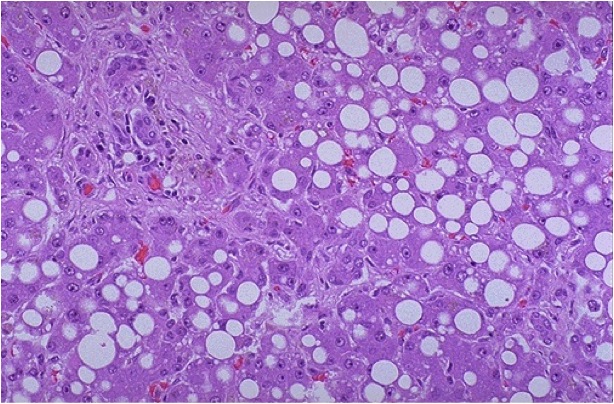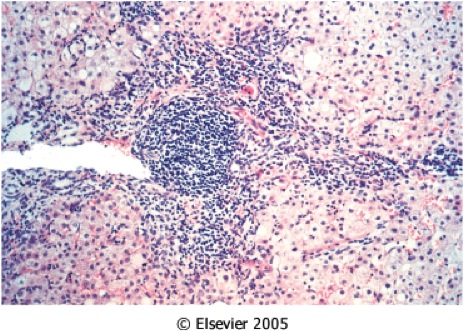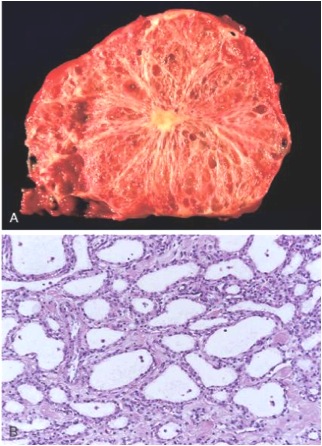Gastrointestinal Practice Exam! Trivia Questions Quiz
(1).png)
What do you know about the gastrointestinal system? Do you think you know enough to pass this exam? The gastrointestinal tract is a string of hollow organs connected by a long, weaving tube from the mouth to the rectal area, typically referred to as the anus. The organs that make up the gastrointestinal tract include the mouth, esophagus, stomach, small intestine, large intestine, and anus. Take a pass at this quiz and test your knowledge of the gastrointestinal tract.
- 1.
Which of the following statements is most accurate regarding the biological functions of hepatocytes?
- A.
Gluconeogenesis occurs primarily in Zone 3
- B.
Cholesterol synthesis occurs primarily in Zone 2
- C.
Glycolysis occurs primarily in Zone 3
- D.
Drug detoxification occurs primarily in Zone 1
- E.
Lipogenesis occurs primarily in Zone 1
Correct Answer
C. Glycolysis occurs primarily in Zone 3Explanation
Zone 1: Higher O2 content Endothelial cell fenestra are larger and less numerous More immune cells numerous large mitochorndria oxidative functions: gluconeogenesis β-oxidation of fatty acids AA catablosim ureagenesis cholesterol synthesis Zone 3: Lower oxygen content Endothelial cell fenestra smaller and more numerous Fewer immune cells more smooth ER glycolysis, lipogenesis detoxification and biotransformation of drugs removal of ammonia from blood LIVER ANATOMY AND CELLULAR ORG (Servoss)Rate this question:
-
- 2.
In the setting of cirrhosis, which of the following is most likely to happen to liver sinusoids?
- A.
Narrowing of the Space of Disse
- B.
Smaller and fewer fenestrations
- C.
Increased fenestrations
- D.
Increased molecular transport across the Space of Disse
- E.
Lose resemblance to systemic capillaries
Correct Answer
B. Smaller and fewer fenestrationsExplanation
In Cirrhosis, sinusoids:
Look more like systemic capillaries
Space of Disse widens with collagen and more basement membrane material
Smaller and fewer endothelial fenestrations
LIVER ANATOMY AND CELLULAR ORG (Servoss)Rate this question:
-
- 3.
In the setting of hepatocyte injury, which of the following is most likely to happen?
- A.
Stellate cells are activated and transform into collagen-producing myofibroblasts
- B.
Stellate cells are deactivated transform to prevent collagen production and cirrhosis
- C.
Kupffer cells will turn into fibrotic bodies
- D.
Dr. Servoss will write straightforward wrap-up questions to facilitate understanding of key concepts
Correct Answer
A. Stellate cells are activated and transform into collagen-producing myofibroblastsExplanation
Stellate cells are the key player in the development of cirrhosis. Kupffer cells do help activate the HSC's but, it is the HSC that does the heavy lifting.
And I don't think anyone needs an explanation on choice D.
LIVER ANATOMY AND CELLULAR ORG (Servoss)Rate this question:
-
- 4.
Which organelle is correctly matched up with its function within the liver?
- A.
Rough ER: Drug metabolism
- B.
Smooth ER: Copper digestion
- C.
Mitochondria: Alcohol metabolism
- D.
Smooth ER: P450 oxidation rxns
- E.
Lysosomes: Bile acid synthesis
Correct Answer
D. Smooth ER: P450 oxidation rxnsExplanation
RER: Protein synthesis
SER: P450 oxidation reactions
Drug metabolism
Fatty acid metabolism
Cholesterol
Mitochondria: Ox-phos, FA oxidation, citric acid, urea cycle
Lysosomes: digestion and catabolism both of self and exogenous products, Copper for example
Peroxisomes: FA oxidation and alcohol metabolism
LIVER CELL STRUCTURE AND FUNCTION (Servoss)Rate this question:
-
- 5.
Which of the following is most correct regarding apolipoproteins?
- A.
Absence of Apo-C2 causes hypotriglyceridemia
- B.
Apo E, found on all lipoproteins, is Important for removal of lipoprotein remnants from serum
- C.
Apo-A1 is the major component of LDL
- D.
Apo-B100 is found only in HDL
- E.
Decreasing Apo-E levels is clinically helpful in patients with hyperlipidemia
Correct Answer
B. Apo E, found on all lipoproteins, is Important for removal of lipoprotein remnants from serumExplanation
ApoA-I
Major component of HDL lipoproteins
ApoB-100
TG transport, VLDL secretion, binding protein for LDL receptor
VLDL, LDL, and IDL
ApoC
ApoC-II present in VLDL, IDL, HDL, chylomicrons
Absence of ApoC-II leads to hypertriglyceridemia
ApoE
Found on all lipoproteins
Important for removal of lipoprotein remnants from serum
Absence of ApoE leads to elevation of chylomicrons and VLDL remnants, increased risk of atherosclerosis
LIVER CELL STRUCTURE AND FUNCTION (Servoss)Rate this question:
-
- 6.
A 46-year-old obese woman presents with a 6-hour history of moderate pain in the RUQ that began after eating dinner. The severity of the pain gradually increased before reaching a constant over the last few hours. She has had previous episodes of similar pain for which she has not sought medical advice. When asked about stool patterns, she noted that her stools have been a pale gray lately. Her vital signs are normal. Her physical exam is noted for tenderness to palpation in the right upper quadrant with no guarding or rebound tenderness.How is her condition related to bilirubin metabolism?
- A.
She has an obstruction in her biliary tract causing a lack of conjugated bilirubin in the intestine.
- B.
She has an excess of urobilinogen due to bile duct obstruction
- C.
She has a lack of albumin, causing decreased transport of conjugated bilirubin
- D.
She has hyperactive bile ducts due to her obesity
- E.
She has gallstones blocking her bile ducts, leading to excess unconjugated bilirubin entering the intestine
Correct Answer
A. She has an obstruction in her biliary tract causing a lack of conjugated bilirubin in the intestine.Explanation
The vignette describes cholelithiasis (gallstones), which can cause the pale color stools because it prevents the conjugated bilirubin from getting into the intestine and being converted to urobilinogen.
LIVER CELL STRUCTURE AND FUNCTION (Servoss)Rate this question:
-
- 7.
Which of the following patients would you expect to have an elevated level of indirect bilirubin?
- A.
46 year old man with pancreatic cancer
- B.
26 year old pregnant woman with cholestasis
- C.
66 year old woman with pancreatic cancer
- D.
23 year old male with mononucleosis acquired during a late night rendezvous in Ft. Lauderdale
Correct Answer
D. 23 year old male with mononucleosis acquired during a late night rendezvous in Ft. LauderdaleExplanation
The answer is D because I was going for hypersplenism caused by Mono. This was listed under the Unconjugated Bilirubin side of the chart in Dr. Cohen's lecture. The hypersplenism leads to increased production of bilirubin, which can't be cleared in the excess quantity.
BILIRUBIN METABOLISM (COHEN)Rate this question:
-
- 8.
A 3 week old male is seen by a neonatologist because of severe jaundice that appeared at birth and has been worsening since. He is the first born child of a healthy Jewish couple. His mother's pregnancy and delivery were uneventful. On PE he is average height and weight for his age, and in no acute distress. He has marked jaundice and slight hepatomegaly. Lab tests show markedly elevated bilirubin of 15 mg/dL and a very low fecal urobilinogen. Phenobarbital treatment is initiated, but is ultimately unsuccessful. The child dies at 6 months of age after showing signs of delayed development.What is the most likely diagnosis?
- A.
Dubin-Johnson syndrome
- B.
Gilbert syndrome
- C.
Criglar-Najjar Type 1
- D.
Criglar-Najjar Type 2
- E.
Rotor syndrome
Correct Answer
C. Criglar-Najjar Type 1Explanation
The severity of the symptoms and TB levels beginning at birth is suggestive for C-N. Because of the lack of response to Phenobarbital and the later development of kernicterus, it is likely C-N Type 1.
BILIRUBIN METABOLISM (COHEN)Rate this question:
-
- 9.
A 56 year old male with a history of mild, controlled Ulcerative Colitis presents with complaints of fatigue and upper abdominal pain. When asked he recalls an itching sensation on the palms and soles, and loose, pale stools, but denies fever. Physical examination is unremarkable. Which of the following sets of lab values would you expect to see in this patient?
- A.
AST 40, ALT 40, Alk Phos 50
- B.
AST 100, ALT 100, Alk Phos 500
- C.
AST 1000, ALT 1000, Alk Phos 150
- D.
AST 1000, ALT 1000, Alk Phos 500
- E.
AST 10000, ALT 10000, Alk Phos 50000
Correct Answer
B. AST 100, ALT 100, Alk Phos 500Explanation
This vignette is suggesting PSC as the origin of his symptoms, but it is also clearly showing cholestatic symptoms rather than hepatocellular. So you would expect the Alk Phos to be 3-10X normal and the ALT/AST to be 1-8X normal (from Dr. Cohen's Bilirubin lecture). Hepatocellular would be more like choice C with ALT/AST 8-20x normal and Alk Phos 1-3X normal.
BILIRUBIN METABOLISM (COHEN)Rate this question:
-
- 10.
A 43 year old asymptomatic woman has an ultrasound of her RUQ for the heck of it. The result is shown here: What is the next most appropriate step in treatment?
- A.
Open Cholecystectomy
- B.
Laproscopic Cholecystectomy
- C.
Reassure the patient, no further treatment required
- D.
Bring the patient to the local medical school for a new 3 hour patient panel on mildly inconvenient diseases
Correct Answer
C. Reassure the patient, no further treatment requiredExplanation
Because she is asymptomatic, no further treatment is required as long as she doesn't talk to a surgeon ;-)
Incidence of problems is 1-2% per year if left untreated, and risk of GB cancer is extremely low.
(Greenwald, Gallbladder and Biliary Disease)Rate this question:
-
- 11.
A 20-year-old obese woman with a 2-year history of gallstones presents to the emergency room with severe, constant RUQ pain, nausea, and vomiting after eating fried chicken for dinner. She denies any chest pain or diarrhea. Three months ago she developed intermittent, sharp RUQ pains. On physical exam, she has a temperature of 100.4°F (38ºC), moderate RUQ tenderness on palpation, but no evidence of jaundice.Which of these is part of the standard treatment for her disease?
- A.
Antibiotics
- B.
NPO
- C.
Surgery (laproscopic cholecystectomy)
- D.
IV fluids
- E.
All of the above are standard
Correct Answer
E. All of the above are standardExplanation
She has acute cholecystitis.
(Greenwald, Gallbladder and Biliary Disease)Rate this question:
-
- 12.
Which of the following is most correct regarding pigment stones?
- A.
Black pigmented stones are composed of Calcium bilirubinate
- B.
Brown pigmented stones are the result of bacteria conjugating the bilirubin in the GB
- C.
Chronic hemolysis is protective against pigmented stones
- D.
Alcohol has no effect on the pathogenesis of pigmented stones
Correct Answer
A. Black pigmented stones are composed of Calcium bilirubinateExplanation
Pigmented Stones:
Common Southeast Asia and certain high risk groups
Black stones---Calcium bilirubinate
Brown stones---Deconjugation of bilirubin in bile by bacteria—Chronically infected bile
Chronic hemolysis—Results in more bilirubin in bile e.g. sickle cell anemia
Alcoholic cirrhosis
(Greenwald, Gallbladder and Biliary Disease)Rate this question:
-
- 13.
A 47-year-old overweight female patient is admitted with generalized abdominal pain. She has been unable to eat or drink due to nausea and vomiting. She states the pain started in the right upper quadrant, similar to previous episodes that she had been to the emergency room with over the past few months. An ultrasound obtained on her last visit to the emergency room revealed gallstones with no inflammation of the gallbladder and was told that she should see a surgeon. She looks jaundiced and in distress. She has point tenderness under her ribs on the right, which is worsened with deep palpation. No mass is palpable. Blood work reveals leukocytosis, hyperglycemia, elevated alkaline phosphatases, conjugated bilirubin, and gamma-GT. Lipase and amylase are 3 times their normal value.What is the diagnosis?
- A.
Renal colic
- B.
Acute pancreatitis
- C.
Acute cholecystitis
- D.
Intestinal obstruction
- E.
Dubin-Johnson syndrome
Correct Answer
B. Acute pancreatitisExplanation
The last sentence is the giveaway, as Lipase and Amylase are the keys to diagnosing acute pancreatitis.
ACUTE AND CHRONIC PANCREATITIS (Greenwald)Rate this question:
-
- 14.
Identify the three images below:A:B:C:
- A.
A: Normal, B: Abscess, C: Pseudocyst
- B.
A: Abscess, B: Normal, C: Abscess
- C.
A: Abscess, B: Pseudocyst, C: Pseudocyst
- D.
A: Pseudocyst, B: Abscess, C: Normal
Correct Answer
C. A: Abscess, B: Pseudocyst, C: PseudocystExplanation
A is an abscess with air/fluid level (and a nice A in the middle of the abscess)
B and C are pseudocysts with smooth borders, no air/fluid levels
ACUTE AND CHRONIC PANCREATITIS (Greenwald)Rate this question:
-
- 15.
Which of the following are attributed as causes of Chronic Pancreatitis?
- A.
Alcohol abuse
- B.
CFTR mutations
- C.
Sjogren's Syndrome
- D.
Diabetes Type 2
- E.
A, B, and C
- F.
All of the above
Correct Answer
E. A, B, and CExplanation
A, B, and C are all potential causes/associated with CP. Alcohol accounts for >70% of cases in the US. DM type 2 is more of a symptom than a cause of CP.
ACUTE AND CHRONIC PANCREATITIS (Greenwald)Rate this question:
-
- 16.
Which type of gallstones is the condition depicted below associated with?
- A.
Black pigmented stones
- B.
Brown pigmented stones
- C.
Cholesterol stones
- D.
Flint stones
- E.
All of the above
Correct Answer
C. Cholesterol stonesExplanation
This is 'strawberry gallbladder' which is aka cholesterolosis, which is associated with cholesterol stones.
PATHOLOGY OF THE PANCREAS (Levitt)Rate this question:
-
- 17.
Which of the following represents a mucinous cystadenoma of the pancreas?A:B: C:D:
- A.
A
- B.
B
- C.
C
- D.
D
Correct Answer
D. DExplanation
D is the mucinous cystadenoma. It has columnar epithelium and 'ovarian' stroma.
A and B are intraductal papillary mucinous neoplasms.
C is a serous cystadenoma, lined by cuboidal epithelium.
PATHOLOGY OF THE PANCREAS (Levitt)Rate this question:
-
- 18.
A 55 year old Taiwanese male presents with painless jaundice. He has no other symptoms and no history of gallstones or liver disease. Upon physical exam the gallbladder is palpable. Within 2 years, he dies from a cholangiocarcinoma.Which of the following statements is true regarding his condition?
- A.
Risk factors include liver fluke infection, IBD, PSC, and Thorotrast use
- B.
Strong association with gallstones
- C.
Most tumors of this type are intrahepatic
- D.
Intrahepatic tumors of this type are decreasing in incidence in the US due to rigorous testing
- E.
The majority of the extrahepatic variety of these tumors are fast growing and metastasize often
Correct Answer
A. Risk factors include liver fluke infection, IBD, PSC, and Thorotrast useExplanation
This is a case of CCA or Cholangiocarcinoma.
A is correct, and B, C, D, and E are all the opposite of what we were taught by Dr. L.
PATHOLOGY OF THE PANCREAS (Levitt)Rate this question:
-
- 19.
A 63-year-old woman is admitted to the hospital with new-onset ascites. She has a history of longstanding diabetes and hypertension, but has never abused alcohol. She has never formally been given a diagnosis of liver disease. Despite increasing abdominal distension, she has lost 13.5 kg in the last year. Physical exam reveals a lethargic-appearing woman with temporal wasting, massive ascites, and 2+ pitting edema. She has numerous spider nevi over her chest wall and marked palmar erythema.Which of the following is most likely be found in a liver biopsy of this patient?
- A.
Mild inflammation only
- B.
Diffuse macrovesicular steatosis without fibrosis
- C.
Cirrhosis
- D.
Hyaline bodies
- E.
C and D
Correct Answer
E. C and DExplanation
This vignette is describing NAFLD progressing into NASH with associated end-stage liver disease (NAFLD type 4). Because she has end stage liver symptoms such as massive ascites, lethargy, wasting, and signs of portal HTN, she must have progressed to cirrhosis, choice C, and Hyaline bodies are also likely because they are found in both Alcoholic Hepatitis and NASH.
ALCOHOLIC LIVER DISEASE AND NAFLD (Cohen)Rate this question:
-
- 20.
A 50-year-old man presents to his primary-care clinic physician with complaints of fatigue for 2 months. The patient also notes distention of his abdomen and shortness of breath beginning 2 weeks ago. His wife reports that the patient has been having episodes of confusion lately. The patient has a significant medical history of chronic heavy alcohol consumption of about a half pint of vodka daily for around 20 years. On physical exam the patient is noted to have scleral icterus, tremors of both hands, and spider angiomata on the chest. There is abdominal distention with presence of shifting dullness, fluid waves, and splenomegaly. Laboratory examination shows low hemoglobin, low platelets, low sodium, AST elevation > ALT elevation, high PT and INR. Ultrasound of the abdomen shows liver hyperechogenicity, portal hypertension, splenomegaly, and ascites.Assuming an MDF value of 35, which of the following options is most appropriate?
- A.
Reassure the patient, no further treatment necessary
- B.
Liver biopsy
- C.
Pentoxifylline
- D.
Prednisolone
- E.
B, C, and D are all possible
Correct Answer
E. B, C, and D are all possibleExplanation
This vignette describes Alcoholic Hepatitis. MDF value of greater than 32 means that it is severe. Biopsy should be considered, as well as possible treatment with Pentoxifylline or Prednisolone
ALCOHOLIC LIVER DISEASE AND NAFLD (Cohen)Rate this question:
-
- 21.
Which set of lab values would be expected in a patient with alcoholic liver disease?
- A.
AST 150, ALT 75
- B.
AST 75, ALT 75
- C.
AST 500, ALT 250
- D.
AST 250, ALT 500
Correct Answer
A. AST 150, ALT 75Explanation
AST>ALT by 2:1 ratio in ALD, and the sum should usually beRate this question:
-
- 22.
An 18-year-old woman presents with bilateral tremor of the hands. She is a senior in high school and during the year her grades have plummeted to the point that she is failing. She says her memory is now poor, and she has trouble focusing on tasks. Her behavior has changed in the past 6 months in that she has frequent episodes of depression, separated by episodes of bizarre behavior, including shoplifting and excessive drinking. Her parents and other authorities have begun to suspect her of using street drugs, which she denies. Her handwriting has become very sloppy. Her parents have noted slight slurring of her speech. Physical exam reveals upper extremity tremor, mild dystonia of the upper extremities, and mild incoordination involving her hands. She is found to have elevated serum aminotransferase enzymes (AST 150 units/L, ALT 175 units/L) an elevated serum bilirubin (77.0 micromol/L(4.5 mg/dL) and Coombs negative hemolytic anemia.Which of the following would be most likely to be seen on physical exam?
- A.
Splenomegaly
- B.
Kaiser-Fleicher rings
- C.
Jaundice
- D.
Ascites
- E.
Peripheral edema
Correct Answer
B. Kaiser-Fleicher ringsExplanation
The vignette is describing Wilson's disease. K-F rings are seen in 99% of neurologically symptomatic Wilson's disease (according to epocrates). You could see jaundice or ascites with Wilson's, but it is rare. Splenomegaly and edema could also be seen with cirrhosis associated with Wilson's but again are less likely.
HEREDITARY AND METABOLIC LIVER DISEASE (Servoss)Rate this question:
-
- 23.
A 50 year old Caucasian male presents to his PCP with symptoms of chronic fatigue, weakness, lethargy, and apathy. Upon physical exam he has hepatomegaly and dark appearing skin. Lab results reveal a hemoglobin A1C of 9.5% and elevated ALT and AST. X ray shows narrowing of joint spaces. Which of the following is most accurate about the pathogenesis of his condition?
- A.
He has elevated Hepcidin levels
- B.
He has decreased Ferroportin function
- C.
He probably has an elevated Transferrin saturation level
- D.
His serum Ferritin level is likely decreased
- E.
Liver biopsy will show iron deposition in Kupffer cells
Correct Answer
C. He probably has an elevated Transferrin saturation levelExplanation
He has hereditary hemochromatosis. His hepcidin would be decreased in the setting of this disease. His Ferroportin function would be elevated because of the lack of hepcidin to hold it in check. He will have an elevated Transferrin, as that is the "earliest phenotypic manifestion of HFE-related HH." Serum ferritin would also be increased. Liver biopsy would show iron within the hepatocytes, but sparing the Kuppfer cells.
HEREDITARY AND METABOLIC LIVER DISEASE (Servoss)Rate this question:
-
- 24.
The patient with the above liver biopsy presents to their PCP with jaundice, scleral icterus, abnormal LFTs, fatigue, and asterixis. They were treated in the past with AAT augmentation for pulmonary symptoms.Which of the following accurately describes the expected findings in this liver biopsy?
- A.
Normal liver tissue
- B.
Acute hepatitis
- C.
PAS - globules
- D.
PAS + globules
- E.
Pretty polka-dots
Correct Answer
D. PAS + globulesExplanation
This is A1 Antitrypsin Deficiency. The biopsy shows red globular inclusions in the hepatocytes of A1-AT. They are PAS + globules.
HEREDITARY AND METABOLIC LIVER DISEASE (Servoss)Rate this question:
-
- 25.
A 55 year old woman presents with fatigue, chronic itching, and jaundice. She also has rheumatoid arthritis and chronic thyroiditis. She does not drink alcohol. PE shows xanthelasmas and scleral icterus. Labs show Alk Phos of 350, ALT 80, AST 110, Total BR 2.5, Albumin 3.2, PTT 16 seconds. AMA is positive.Which of the following is most correct about her condition?
- A.
Ursodeoxycholic acid, while not curative, is the best available treatment
- B.
Liver biopsy shows lack of bile ducts
- C.
AMA has a low sensitivity
- D.
Negative AMA is diagnostic
- E.
Autoreactive CD8 cells cause symptoms
Correct Answer
A. Ursodeoxycholic acid, while not curative, is the best available treatmentExplanation
This is PBC, AMA + is diagnostic (95%), URSO is the best Tx, Florid bile ducts are seen on biopsy, and it is CD4+ cells that cause the disease.
CHOLESTATIC LIVER DISEASE (Servoss)Rate this question:
-
- 26.
A 43-year-old male with a history of mild ulcerative colitis is noted to have an elevated serum alkaline phosphatase, slightly elevated aminotransferases, and normal bilirubin on routine laboratory testing. He complains of fatigue and upper abdominal pain. He denies pruritus or fevers. Physical examination is unremarkable.Which of the following is true about his condition?
- A.
He is at increased risk of cholangiocarcinoma
- B.
P-ANCA is diagnostic in 90% of cases
- C.
Typical biopsy findings are intense lymphocytic infiltrate and florid bile ducts
- D.
All of the above
- E.
None of the above
Correct Answer
A. He is at increased risk of cholangiocarcinomaExplanation
He has PSC, and has a 7-15% lifetime risk of cholangiocarcinoma. P-ANCA is only positive in 30-80% of cases and typical biopsy shows 'classic onion skin' appearance.
CHOLESTATIC LIVER DISEASE (Servoss)Rate this question:
-
- 27.
Which of the following are true about Drug-Induced Cholestasis?
- A.
Potential causative drugs include: amoxicillin, ibuprofen, and estradiol
- B.
Can be acute or chronic, with or without hepatitis
- C.
Can cause bile ducts to vanish into thin air
- D.
Can involve large bile ducts and mimic PSC
- E.
All of the above
- F.
It doesn't exist
Correct Answer
E. All of the aboveExplanation
These are all true, as mentioned in Dr. S' lecture.
CHOLESTATIC LIVER DISEASE (Servoss)Rate this question:
-
- 28.
Which of the following is true about the Hepatitis A virus?
- A.
DNA virus
- B.
Primarily spread by high-risk sexual contact
- C.
Anti-HAV IgM indicates an acute infection
- D.
Anti-HAV IgG indicates an acute infection
- E.
If left untreated, it can progress to cause chronic liver cirrhosis
Correct Answer
C. Anti-HAV IgM indicates an acute infectionExplanation
It is an RNA virus.
Primarily spread through fecal-oral route.
Anti-HAV IgM does indicate an acute infection.
Anti-HAV IgG indicates a past exposure
HAV can cause fulminant hepatitis, but it is never chronic
ACUTE AND CHRONIC VIRAL HEPATITIS (Rosenthal)Rate this question:
-
- 29.
A 30-year-old African American man presents with nausea, vomiting, mild RUQ pain, and myalgias for several days. He is sexually active and has had multiple sexual partners in the past 6 months. He has a history of gonorrhea and chlamydia. He has been tested negative for HIV several times. His physical examination reveals jaundice and an enlarged liver. His complete WBC and coagulation profiles are normal. However, his HBV serologies are positive for HBsAg, HBcIgMAb, and HBeAg. Which of the following is most correct about his condition?
- A.
He has chronic Hepatitis B
- B.
He will always show a positive HBsAg as a result of his exposure to the virus
- C.
He will always show a positive HBc(IgM)Ab because of his exposure to the virus
- D.
If he succesfully clears the infection, he will have positive Total anti-HBc for life
- E.
If he develops anti-HBe it will signify a relapse or co-infection
Correct Answer
D. If he succesfully clears the infection, he will have positive Total anti-HBc for lifeExplanation
He 'obviously' has Hep. B. Because his anti-HBc IgM is positive, that means it is an acute infection.
ACUTE AND CHRONIC VIRAL HEPATITIS (Rosenthal)Rate this question:
-
- 30.
Anthony Kiedis, the lead singer for the Red Hot Chili Peppers, contracted Hepatitis C from IV drug use under a bridge downtown in the 1990s. He claims that he has been cured of his disease by Ozone Therapy. Assuming that he had gone with a more traditional western medical approach of using peginterferon plus ribavirin, which of the following correctly pairs his potential HCV genotype with the likelihood of response to treatment?
- A.
If he had Type 1: 75%
- B.
If he had Type 1: 25%
- C.
If he had Type 2: 45-50%
- D.
If he had Type 3: 50-60%
- E.
If he had Type 3: 75-90%
- F.
Any genotype with Ozone therapy: 100%
Correct Answer
E. If he had Type 3: 75-90%Explanation
This was quoted during wrap-up, that for Type 1 it is 45-50%, and for Type 2 and 3 it is 75-90%.
HEPATITIS C PBL CASERate this question:
-
- 31.
Which of the following count for positive points on the scale to diagnose autoimmune hepatitis?
- A.
LKM1 > 1:80
- B.
Female
- C.
Granulomas
- D.
AMA positive
- E.
A and B
- F.
All of the above
Correct Answer
E. A and BExplanation
Things that are strong positives for AIH:
GG>2, ANA, SMA, LKM1 >1:80, No viral markers, Interface hepatitis, Steroid response/relapse after remission
Strong negatives: AMA positive, hepatotoxic drugs, no histological features, any evidence of viral hepatitis
AUTOIMMUNE HEPATITIS (Cohen)Rate this question:
-
- 32.
Which disease is the above biopsy most suggestive of?
- A.
Autoimmune hepatitis
- B.
Alcoholic liver disease
- C.
Sarcoidosis
- D.
Primary biliary cirrhosis
- E.
Primary sclerosing cholangitis
Correct Answer
A. Autoimmune hepatitisExplanation
This image shows Interface hepatitis. The limiting plate of the portal tract is disrupted by a mononuclear infiltrate that extends into the hepatic lobule. Hematoxylin and eosin; original magnification, x200.
This is suggestive of AIH.
AUTOIMMUNE HEPATITIS (Cohen)Rate this question:
-
- 33.
A 45-year-old woman presents with insidious onset of fatigue, malaise, lethargy, anorexia, nausea, abdominal discomfort, mild pruritus, and arthralgia involving the small joints. Her past medical history includes celiac disease. Physical examination reveals hepatomegaly and spider angiomata. Histological findings include interface hepatitis. Lab studies show negative ANA, SMA, and LKM1. She is prescribed corticosteroids and responds well to treatment. What is the most likely diagnosis?
- A.
PSC
- B.
PBC
- C.
AIH
- D.
Autoimmune cholangitis
- E.
Cryptogenic chronic hepatitis
Correct Answer
E. Cryptogenic chronic hepatitisExplanation
According to Dr. Cohen, CCH is clinically and histologically similar to AIH, but is antibody negative. AIH could be a possible answer, but she doesn't have strong evidence of it, and the lack of any antibodies makes CCH the best choice.
AUTOIMMUNE HEPATITIS (Cohen)Rate this question:
-
- 34.
Which of the following is true about the mechanism of portal hypertension?
- A.
Splanchnic vasoconstriction causes portal hypertension
- B.
Larger diameter varices are less likely to rupture than smaller diameter varices
- C.
Non-selective B-blockers are an effective treatment for portal HTN because they cause mesenteric atreriolar vasodilation, thus lowering the portal pressure
- D.
Octreotide can be used to manage active variceal hemorrhage because it decreases portal pressure by decreasing glucagon release, thus decreasing portal inflow
- E.
Cirrhosis leads to decreased portal 'in' flow by constricting mesenteric arteries
- F.
All of the above
Correct Answer
D. Octreotide can be used to manage active variceal hemorrhage because it decreases portal pressure by decreasing glucagon release, thus decreasing portal inflowExplanation
D is correct, and all the others are flipped around.
A: splanchnic vasodilation cause PHTN
B: larger are more likely to rupture
C: NS BBlockers cause mesenteric vasoconstriction, which lowers PHTN
D: Correct
E: Cirrhosis increases portal inflow by dilating mesenteric arteries by the action of eNOS
CLINICAL PRESENTATION OF END STAGE LIVER DISEASE (Servoss)Rate this question:
-
- 35.
Which of the following is true regarding ascites and its complications?
- A.
SAAG < 1.1 is consistent with portal HTN
- B.
Spontaneous bacterial peritonitis can be diagnosed by a neutrophil count >250 in ascitic fluid
- C.
Treatment of ascites involves a high salt diet to induce systemic water retention
- D.
Albumin has a weak oncotic force compared to other circulating proteins
Correct Answer
B. Spontaneous bacterial peritonitis can be diagnosed by a neutrophil count >250 in ascitic fluidExplanation
SAAG must be > 1.1 to be from portal HTN
A salt restricted diet is important for treating ascites
Albumin has the strongest oncotic force
CLINICAL PRESENTATION OF END STAGE LIVER DISEASE (Servoss)Rate this question:
-
- 36.
Which of the following is a mechanism proposed for how ammonia causes hepatic encephalopathy?
- A.
Increases glycogen concentration in astrocytes
- B.
Enhances synaptic transmission
- C.
Enhances glial-neuronal signaling
- D.
Modulates cell signaling via GABA and Glutamate
- E.
All patients with HE have elevated serum ammonia
Correct Answer
D. Modulates cell signaling via GABA and GlutamateExplanation
Decreases glycogen in astrocytes
Interferes with glial-neuronal communication and synaptic transmission
It does modulate cell signaling via GABA and Glutamate
Not all pts with HE have high serum NH4+, which is the main problem with the ammonia hypothesis
CLINICAL PRESENTATION OF END STAGE LIVER DISEASE (Servoss)Rate this question:
-
- 37.
Which of the following is true about this biopsy image?
- A.
Shows florid bile duct lesions
- B.
Shows interface hepatitis
- C.
Shows ballooning of cells and fibrosis
- D.
Consistent with PSC
- E.
Consistent with chronic Hepatitis B infection
Correct Answer
C. Shows ballooning of cells and fibrosisExplanation
C is correct and typical of alcoholic liver disease.
PATHOLOGY OF CHRONIC LIVER DISEASE (Levitt)Rate this question:
-
- 38.
What is the condition most consistent with the above image?
- A.
Hepatitis A
- B.
Hepatitis B
- C.
Hepatitis C
- D.
Hepatitis CU Later
Correct Answer
B. Hepatitis BExplanation
This is the typical 'ground glass' appearance of Hepatitis B. And yes I realize I did exactly what Dr. L said he wouldn't do and gave you this without a vignette. Deal with it.
PATHOLOGY OF CHRONIC LIVER DISEASE (Levitt)Rate this question:
-
- 39.
A 43 year old caucasian woman who used to work as an 'actress' and who was known almost exclusively for her surgically enhanced silicomastia, presents to your office for follow up of her chronically abnormal LFTs. She has a history of well documented sexual intercourse with a drummer from an 80s hair band, and at one point she shared a tattoo needle with him. He claims not to have had any history of STDs. She is LKM1, ANA, and SMA negative. What is the diagnosis, represented by the above biopsy?
- A.
Autoimmune hepatitis
- B.
PBC
- C.
PSC
- D.
Chronic Hepatitis B
- E.
Chronic Hepatitis C
Correct Answer
E. Chronic Hepatitis CExplanation
This biopsy shows interface hepatitis, which should narrow it down to A or E, and given the history, negative autoimmune antibodies and risk factors, E is the more likely answer.
PATHOLOGY OF CHRONIC LIVER DISEASE (Levitt)Rate this question:
-
- 40.
Which of the following images is consistent with a diagnosis of neonatal hepatitis?A: B:C: D:
- A.
A
- B.
B
- C.
C
- D.
D
- E.
None of the above
Correct Answer
C. CExplanation
A: Serous cystadenoma
B: Cirrhosis
C: Neonatal hepatitis, with multinucleated giant cells and cholestasis
D: Chronic HCV infection with interface hepatitis
PATHOLOGY OF CHRONIC LIVER DISEASE (Levitt)Rate this question:
-
- 41.
Which of the following diseases is correctly matched up with the type of hyperbilirubinemia that it causes?
- A.
Hemolytic anemia: Unconjugated hyperbilirubinemia
- B.
Gilbert syndrome: Direct hyperbilirubinemia
- C.
Cholestasis: Unconjugated hyperbilirubinemia
- D.
Crigler-Najjar: Conjugated hyperbilirubinemia
- E.
None of the above
Correct Answer
A. Hemolytic anemia: Unconjugated hyperbilirubinemiaExplanation
A: Hemolytic anemia overloads the liver's capacity to conjugate bilirubin, leading to excess unconjugate
B: GB syndrome is a deficiency of UDP-Gluc which results in a lack of conjugated BR, and hence an Indirect HyperBRemia
C: Cholestasis doesn't affect conjugation, so it would be high direct BR
D: C-N is basically a more severe Gilbert. There is almost no conjugation happening, hence it would be unconjugated BR.
PATHOLOGY OF CHRONIC LIVER DISEASE (Levitt)Rate this question:
-
- 42.
A 14-year-old boy is seen in the outpatient clinic with persistent jaundice. His mother reports that jaundice has been noted since early infancy and has never completely cleared up. Some blood tests were done at that time and they were told that, apart from jaundice levels being high, the rest of the test results were all within normal limits. He was followed up for a year and then discharged as he remained well with no symptoms. His eyes have always looked slightly yellow and he has always passed dark-colored urine. The boy's mother reports that he had a chest infection recently and that since then his jaundice has looked a lot worse. He is otherwise completely asymptomatic. Physical exam is unremarkable apart from obvious icterus. Liver biopsy is normal. Lab shows Total bilirubin of 3, direct bilirubin 2.2 . What is the most likely diagnosis?
- A.
Crigler-Najjar syndrome Type 1
- B.
Crigler-Najjar syndrome Type 2
- C.
Gilbert syndrome
- D.
Dubin-Johnson syndrome
- E.
Rotor syndrome
Correct Answer
E. Rotor syndromeExplanation
This is Rotor syndrome. The elevated conjugated bilirubin should rule out A, B, and C. Between D-J and Rotor, since there is nothing on the liver biopsy, it is Rotor. D-J would have the "black liver" appearance. Rotor is usually clinically mild like this, with jaundice that is persistent but can intensify with acute illness.
PATHOLOGY OF CHRONIC LIVER DISEASE (Levitt)Rate this question:
-
- 43.
A 21 year old college student is dragged to the emergency department after attempting 21 shots for his 21st birthday. He was found unconscious on the floor with an open bottle of Tylenol is his hand. On exam, scleral icterus is noted. Upon further workup his LFTs are highly elevated, INR is 1.1, his mental status remains altered, and there is no evidence of cirrhosis.Which of the following is true about this patient?
- A.
Meets the criteria for Acute Liver Failure (ALF)
- B.
Does not meet the criteria for ALF
- C.
He just needs to sleep it off
- D.
A recent history of Hepatitis B would not affect the diagnosis of ALF
Correct Answer
B. Does not meet the criteria for ALFExplanation
Criteria for ALF: Encephalopathy, INR > 1.5, Acute illness, No cirrhosis.
Hepatitis B is a potential cause of ALF, so it would affect the diagnosis.
ACUTE LIVER FAILURE (Servoss)Rate this question:
-
- 44.
Which of the following is true about the metabolism of acetaminophen?
- A.
Alcohol increases glutathione (GSH) concentration, which causes toxicity
- B.
NAPQI is produced by the enzyme GSH-Transferase
- C.
The cytochrome P-450 system is only activated by alcohol
- D.
Alcohol adversely affects Acetaminophen metabolism by increasing NAPQI and decreasing GSH
- E.
N-acetylcysteine gets rid of excess GSH to treat Acetaminophen toxicity
Correct Answer
D. Alcohol adversely affects Acetaminophen metabolism by increasing NAPQI and decreasing GSHExplanation
A: Alcohol abuse depletes GSH, which is the compound that detoxifies NAPQI
B: NAPQI is detoxified by GSH-Transferase, it is produced by the C P450 system
C: C P450 is active in processing about 5% of acetaminophen when alcohol is not present
D: This is correct
E: NAC increases GSH to treat toxicity
ACUTE LIVER FAILURE (Servoss)Rate this question:
-
- 45.
A 50-year-old man with a history of essential thrombocytosis of 12 years' duration presents with mild jaundice and vague RUQ pain. Physical exam reveals minimal ascites, hepatomegaly, and splenomegaly. Venography reveals the following:What is the diagnosis?
- A.
Wilson's disease
- B.
Primary sclerosis cholangitis
- C.
Primary biliary cirrhosis
- D.
Gilbert syndrome
- E.
Budd-Chiari syndrome
Correct Answer
E. Budd-Chiari syndromeExplanation
This is Budd-Chiari syndrome, with a hypercoaguable state in the vignette, and "spider web" feature on venography.
ACUTE LIVER FAILURE (Servoss)Rate this question:
-
- 46.
Which of the following drugs used to treat steroid resistant Acute Cellular Rejection is correctly matched up with its mechanism of action?
- A.
Tacrolimus (FK506): Blocks purine synthesis
- B.
Sirolimus: mTOR inhibitor, blocks IL-2 receptor pathway
- C.
OKT3: Monoclonal antibody to CD25 of IL-2 receptors
- D.
Basiliximab: Monoclonal antibody to CD3
Correct Answer
B. Sirolimus: mTOR inhibitor, blocks IL-2 receptor pathwayExplanation
A: Tacrolimus blocks FKBP, which inhibits calcineurin
B: Correct
C: MAB to CD3
D: MAB to CD25
IMMUNOLOGIC BASIS OF LIVER DISEASE (Servoss)Rate this question:
-
- 47.
Which of the following is most correct about B and T cell function?
- A.
Variability in highly polymorphic B-sheet regions provides most of the variation in MHC proteins
- B.
Chromosome 7 is the site of the genes for most MHC proteins
- C.
MHC Class II proteins, HLA-DP, HLA-DQ, and HLA-DR are presented to CD4+ helper T cells
- D.
T and B cells are key components of innate immunity
- E.
Kuppfer cells and NK cells are key components of adaptive immunity
Correct Answer
C. MHC Class II proteins, HLA-DP, HLA-DQ, and HLA-DR are presented to CD4+ helper T cellsExplanation
A: B sheets are highly conserved, A-helixes are variable
B: Chromosome 6 is the site of MHC genes
C: This is correct
D: T and B cells are adaptive
E: Kuppfer and NK cells are innate
IMMUNOLOGIC BASIS OF LIVER DISEASE (Servoss)Rate this question:
-
- 48.
Which of the following is NOT a risk factor for acute cellular rejection (ACR) ?
- A.
High number of HLA-DR mismatches
- B.
Longer cold ischemic time
- C.
Younger donor
- D.
Poor surgical technique
- E.
Texting a pick-up line
Correct Answer
C. Younger donorExplanation
A and B are risk factors,
C: older donor age is a risk factor
D: Not applicable
E: Get it? Acute Cellular Rejection? Can you tell this is toward the end of my studying and I'm getting studying-induced encephalopathy?
IMMUNOLOGIC BASIS OF LIVER DISEASE (Servoss)Rate this question:
-
- 49.
Which of the following is true about PFIC type 1 (Byler disease)?
- A.
Caused by mutation in ATP7B gene
- B.
Characterized by high GGT
- C.
Usually has mild symptoms of pruritus and jaundice
- D.
Caused by mutation in ABCB11 gene
- E.
Caused by mutation in ATP8B1 gene
Correct Answer
E. Caused by mutation in ATP8B1 geneExplanation
A: that is Wilson's dx
B: that is type 3, type 1 has low GGT
C: that is type 3, type 1 usually has severe Sx
D: that is type 2
E: correct
PEDIATRIC LIVER DISEASE (Servoss)Rate this question:
-
- 50.
This patient walks into your office, complaining of itching, jaundice and abdominal pain. On examination, he has a systolic murmur over the 2nd left intercostal space. Which of the following is true about his condition?
- A.
Liver biopsy showing 8 bile ducts and 11 portal tracts is diagnostic
- B.
Caused by a mutation of the Jagged1 gene on chromosome 20
- C.
Autosomal recessive condition
- D.
Majority of cases are associated with Tetralogy of Fallot
- E.
Growth retardation is rare
Correct Answer
B. Caused by a mutation of the Jagged1 gene on chromosome 20Explanation
This is Alagille syndrome (paucity of bile ducts).
A: Liver biopsy needs to show duct/portal tract ratio of 20 portal tracts to be diagnostic.
B: Correct
C: Autosomal dominant
D: 9-14% have TOF
E: 50-87% have growth retardation
PEDIATRIC LIVER DISEASE (Servoss)Rate this question:
-
Quiz Review Timeline +
Our quizzes are rigorously reviewed, monitored and continuously updated by our expert board to maintain accuracy, relevance, and timeliness.
-
Current Version
-
Mar 21, 2023Quiz Edited by
ProProfs Editorial Team -
Sep 22, 2010Quiz Created by
Michaelfleming
 Back to top
Back to top



